Facts About Hawaii Volcanoes National Park: 30 Fascinating Discoveries
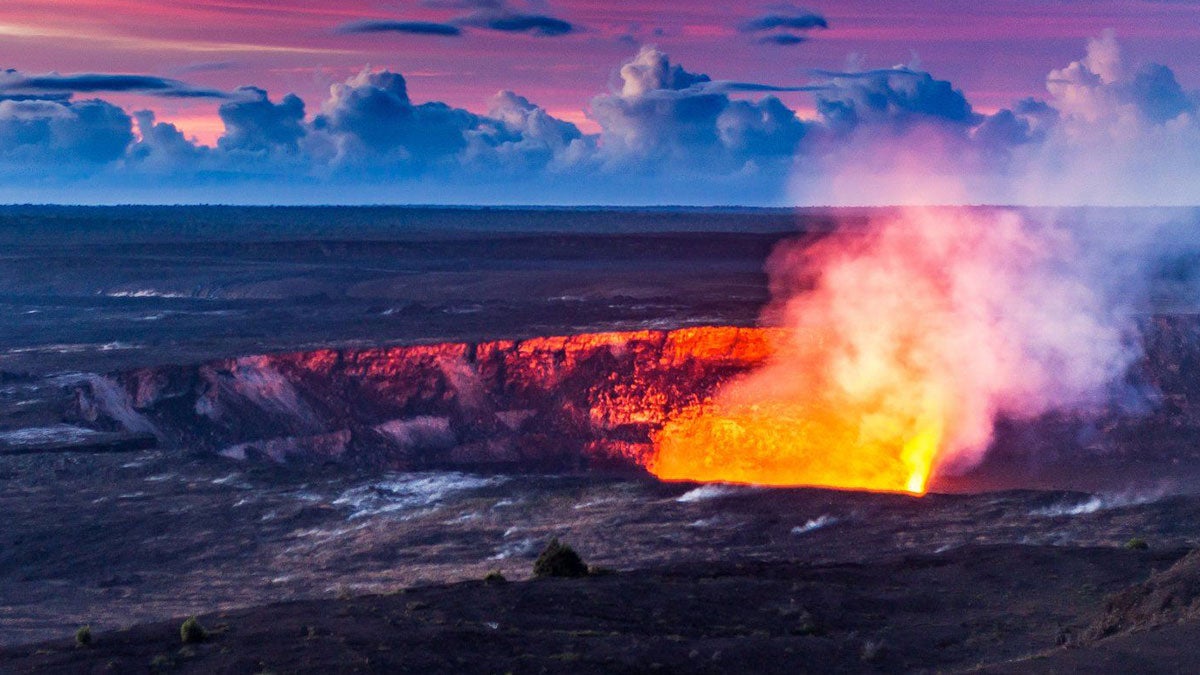
Hawaii Volcanoes National Park serves as the most sizzling experience in Hawaii — if not the world.
Located on the Big Island, Hawaii Volcanoes National Park is an astonishing natural wonder. The park is managed by the United States National Park Service and features the largest active volcano globally. It also consists of a whopping seven ecological zones, meaning a new, amazing landscape waits at every turn when visiting Hawaii volcanoes. The list of incredible Hawaii Volcanoes National Park facts is a long one!
But first, a little background information. The over 300,000-acre park situated in the Hawaiian Islands was originally established in 1961. Over one million people visit the happening landmark each year. Due to high elevations, temperatures at Hawaii Volcanoes National Park tend to be cooler than other locations in Hawaii. In addition, the various ecological zones mean weather can vary widely throughout the park.
Ready to find out more than 10 facts about Hawaii Volcanoes National Park? Keep reading for a fascinating roundup of Hawaii Volcanoes National Park facts below.
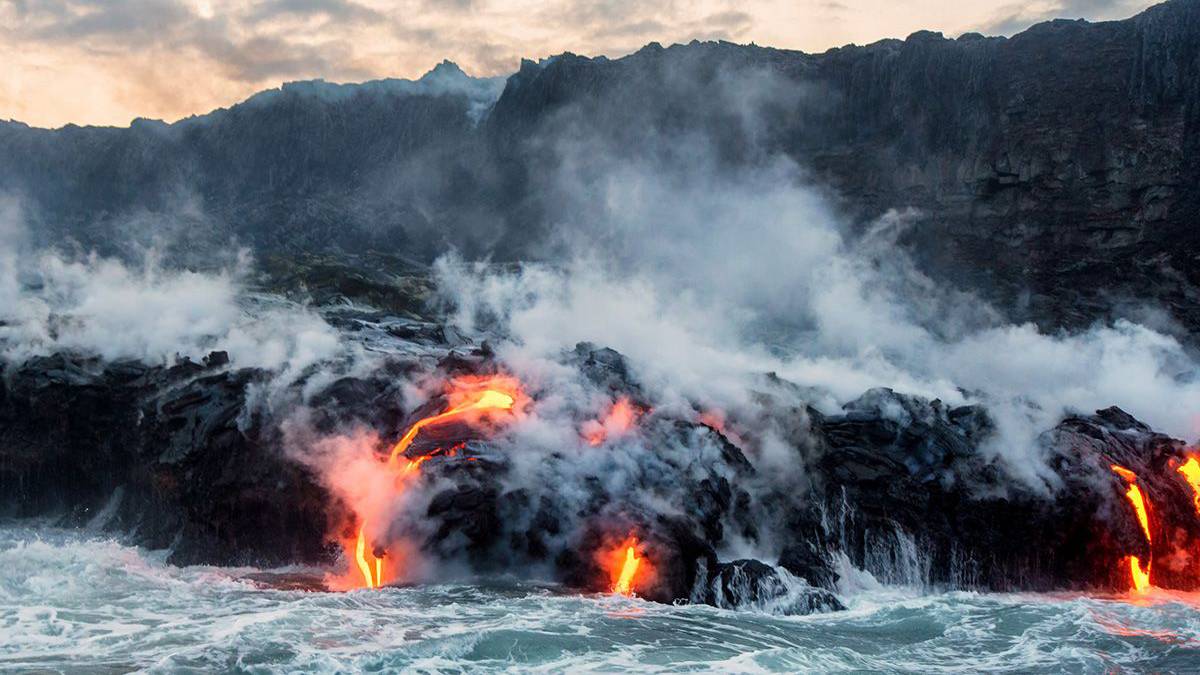
Interesting Facts About Hawaii Volcanoes National Park
1. Hawaii Volcanoes National Park was formerly a part of Hawaii National Park, which was established in 1916 at the order of Woodrow Wilson.
2. The park encompasses 505 square miles.
3. When you first enter the park, the Kilauea Visitor Center is a great place to start exploring. It offers fascinating exhibits and pivotal safety information.
4. Guests can take Chain of Craters Road, which traverses 20 miles through volcanic landforms between the Kilauea Crater and Holei Sea Arch. You’ll pass several volcanic areas worthy of interrupting the drive.
5. Hawaii Volcanoes National Park was designated a UNESCO World Heritage site in 1987. Also, wondering when was Hawaii Volcanoes National Park designated an International Biosphere Reserve? 1980.
6. It is home to two active shield volcanoes: Mauna Loa and Kilauea. These volcanoes are 22 miles apart.
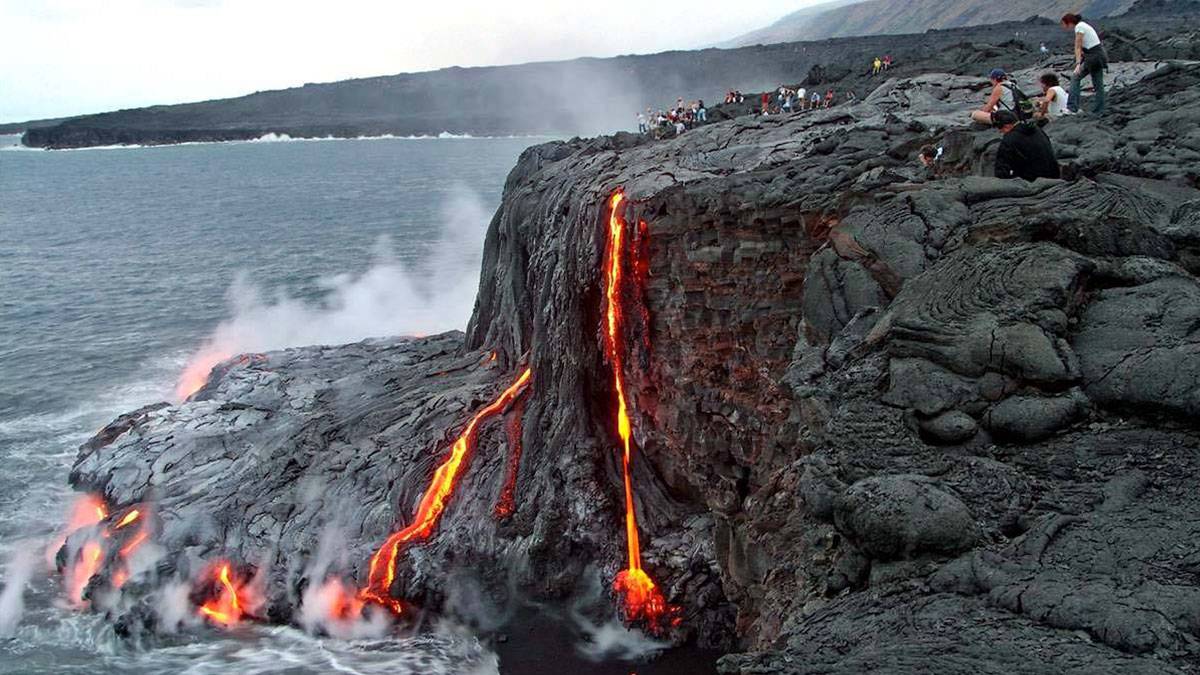
Fun Facts About Volcanoes: Mauna Loa
1. Mauna Loa is the world’s largest active volcano (not to be confused with Mauna Kea, which stands proudly as the tallest mountain in the world when including the portion below sea level). It covers half of the island!
2. The volcano reaches an elevation of 13,677 feet!
3. Since its first documented eruption in 1843, it has erupted three dozen times. However, it’s been active for nearly 700,000 years. Its most recent eruption was in 1984.
4. Two trailheads allow visitors to access the summit of Mauna Loa: Mauna Loa Road and Mauna Loa Observatory Road. Mauna Loa Observatory Road is the shorter hike of the two options.
 Mount Kilauea Facts
Mount Kilauea Facts
1. Standing east of Mauna Loa, the Kilauea volcano is considered the world’s most active volcano. The Halemaumau Crater is the volcano’s most active vent.
2. Kilauea is the state of Hawaii’s youngest volcano.
3. Nearly continuous eruptions of the volcano occurred from 1983 to 2018, but the most recent eruption was in 2020.
4. The Kilauea Iki Crater Overlook marks the beginning of the ever-popular Kilauea Iki Trail.
5. The crater floor is nothing more than hardened lava but was once a red hot lava lake.
6. A trailhead at the Kilauea Iki Crater Overlook leads to the Thurston Lava Tube. A lava river carved out the tube 500 years ago, and guests can now pass through it.
7. Many people flock to the summit of Kilauea for captivating views of the steam vents and Sulphur Banks. These mystical attractions are sights to behold.
8. In 2018, one eruption from Kilauea sent a plume of volcanic ash about 30,000 feet into the sky. The months-long eruption destroyed hundreds of homes. As a result, Hawaii Volcanoes National Park was closed for 135 days.
9. Crater Rim Drive curves along the edge of the Kilauea Crater, taking visitors to viewpoints where they can look into the crater. In addition, several locations on the drive mark the trailheads of some great volcano hikes.
Hawaii Volcanoes National Park Fun Facts: Ecology
1. The park contains seven ecological zones: seacoast, lowland forest, mid-elevation woodland, rain forest, upland forest, subalpine, and alpine.
2. Each zone boasts unique native plant and animal species, including about 60 threatened and endangered species. Some of the species found around the island include green sea turtles, native Hawaiian hoary bats, and a host of native forest birds.
3. The national park features the Tree Fern Forest, which receives nearly 100 inches of rainfall each year.
4. Those interested in diverse plant and bird species will take delight in winding through Kipuka Puaulu, or Bird Park, which is northwest of Kilauea. Kipuka Puaulu presents a nature trail that leads visitors from a grassy meadow to an open forest with numerous native trees. Aside from tropical birds, visitors may also see introduced wildlife such as mongooses, wild goats, and wild pigs.
5. Guests can sometimes see a fantastical viewing of lava pouring into the ocean. Watching lava flow is a lot like watching the most spectacular fireworks.
Volcanoes in Hawaii Facts: Volcano House and Art Center
1. Built in 1846, the Volcano House once served as the oldest hotel in Hawaii.
2. Now, the Volcano Art Center gallery calls the Volcano House home. It showcases classes and workshops, a gallery for local artists, hula performers, and free guided hikes into the Niaulani Rainforest.
3. The gallery displays the work of over 230 artists.
 Hawaii Volcanoes National Park Interesting Facts: Kau Desert Footprints Trail
Hawaii Volcanoes National Park Interesting Facts: Kau Desert Footprints Trail
1. The Kau Desert Trail is just shy of a four-mile hike. The hike is fairly easy, so hikers of all skill levels can enjoy it.
2. While the Kau Desert isn’t actually a desert, it has the appearance of one due to the rain shadow from Mauna Loa and acid rain from the gasses of Kilauea.
3. This trail is typically incredibly desolate, so you likely won’t run into other hikers. So be sure to pack everything you need, including plenty of water and sunblock.
4. The trailhead isn’t actually located inside Hawaii Volcanoes National Park. Instead, you’ll find parking for it on Highway 11, west of the park.
*Facts are taken from Encyclopedia Britannica, National Geographic, and the National Park Service.
Which of these Hawaii Volcanoes National Park facts caught your eye?
Now that you know these fun facts about Hawaii Volcanoes National Park, you’re ready to experience thrilling adventures at the park. We recommend dedicating at least one full day to explore the park’s vastness so you can see as much as possible!
At the end of a long day in the park, you’ll need a cool place to crash. One of our top picks? The Volcano Forest Inn! For the best hotel and attractions savings during your trip, Tripster is here to help.
Have Additional Facts to Share?
Leave us a comment below!
6 comments about “Facts About Hawaii Volcanoes National Park: 30 Fascinating Discoveries”
 Mount Kilauea Facts
Mount Kilauea Facts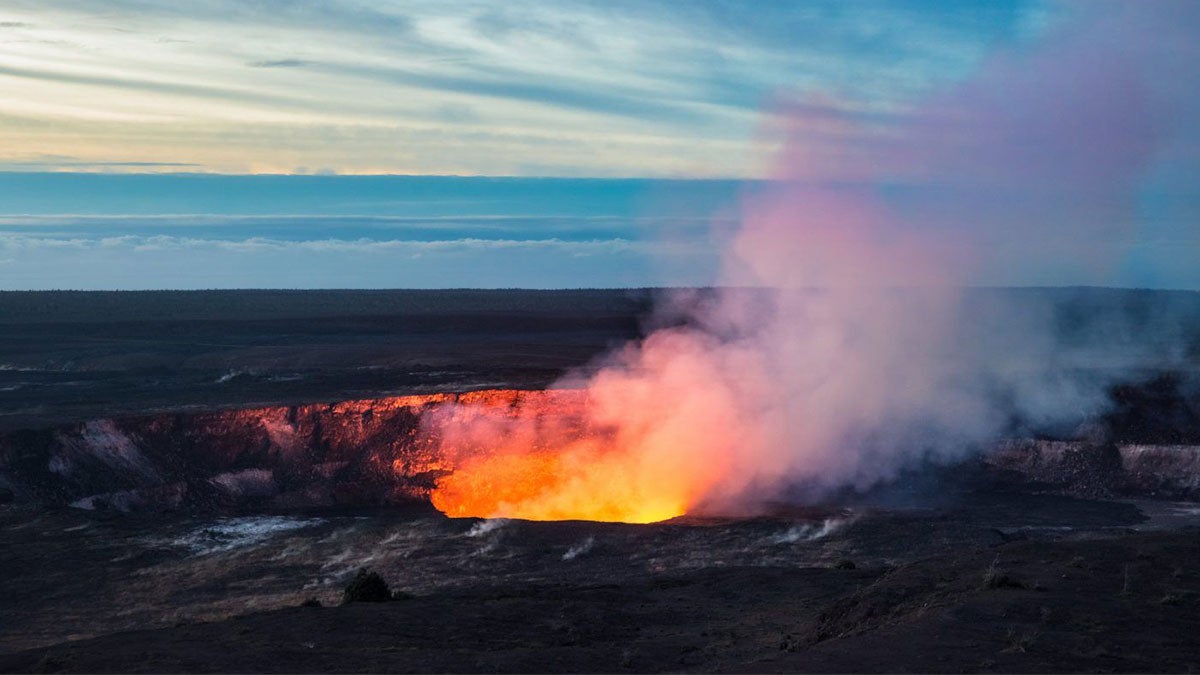
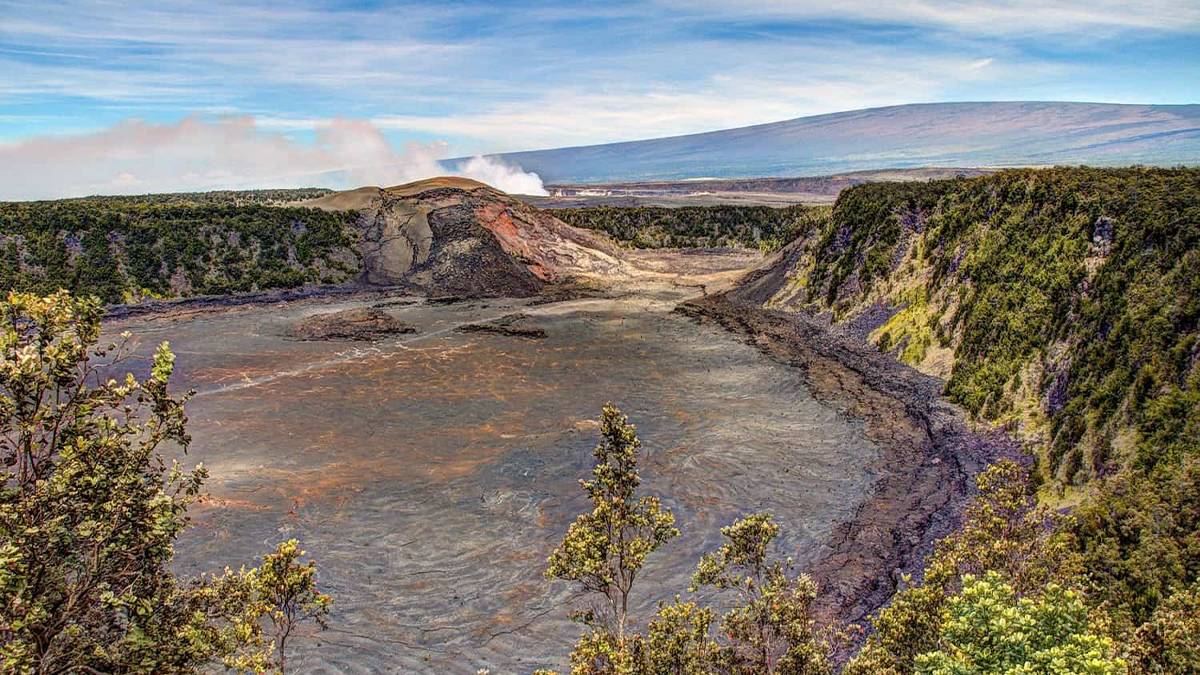 Hawaii Volcanoes National Park Interesting Facts: Kau Desert Footprints Trail
Hawaii Volcanoes National Park Interesting Facts: Kau Desert Footprints Trail
Hawaii is actully a volcano
Correct! 🙂 The islands are still being shaped today by the different volcanos. Have you been to any of the active volcanos in Hawaii yet?
no ihave not
Hope it’s on your travel bucket list. They are amazing! 🌋
thank you for the information!
Your information is also correct, thank you!!!